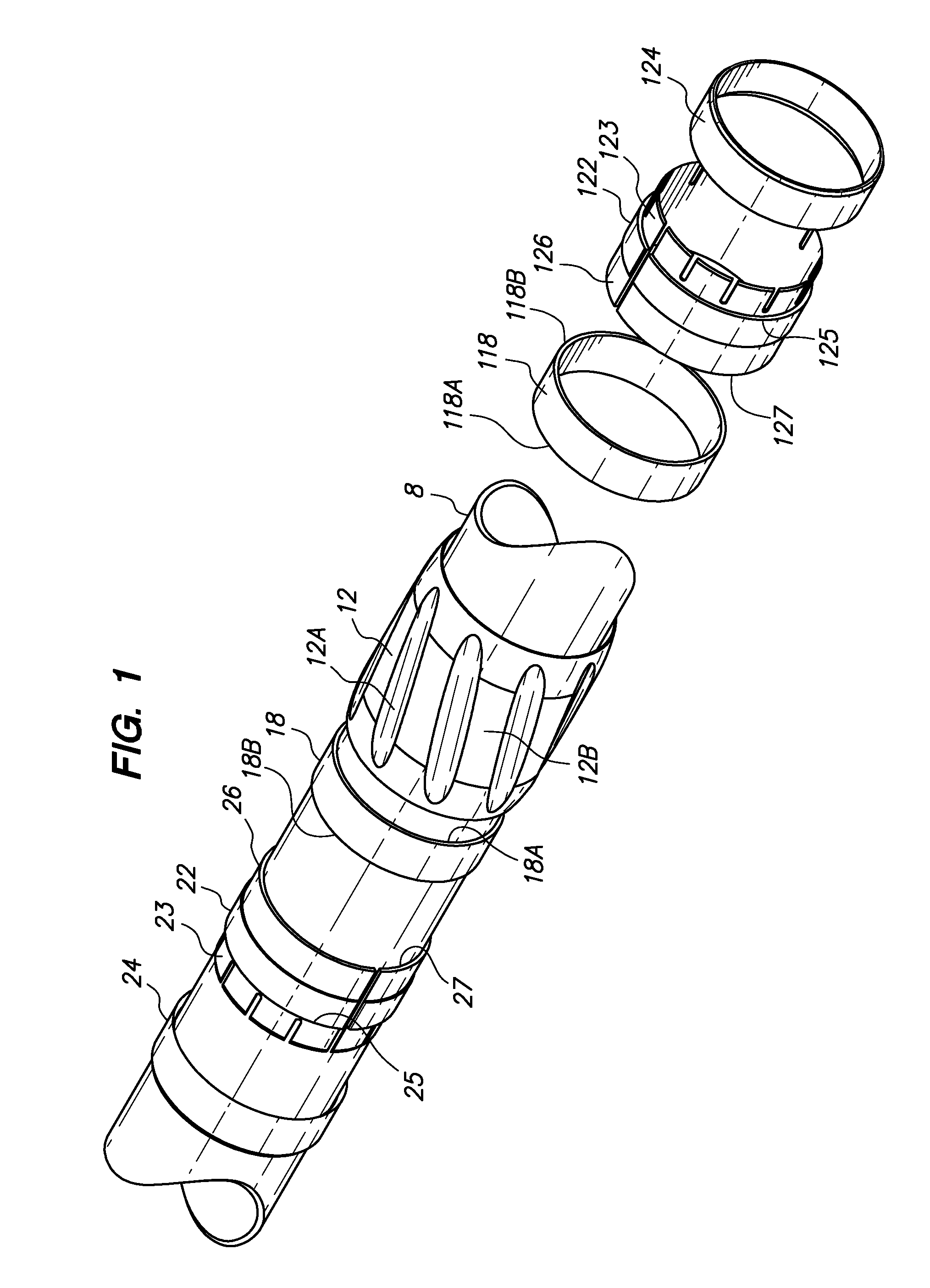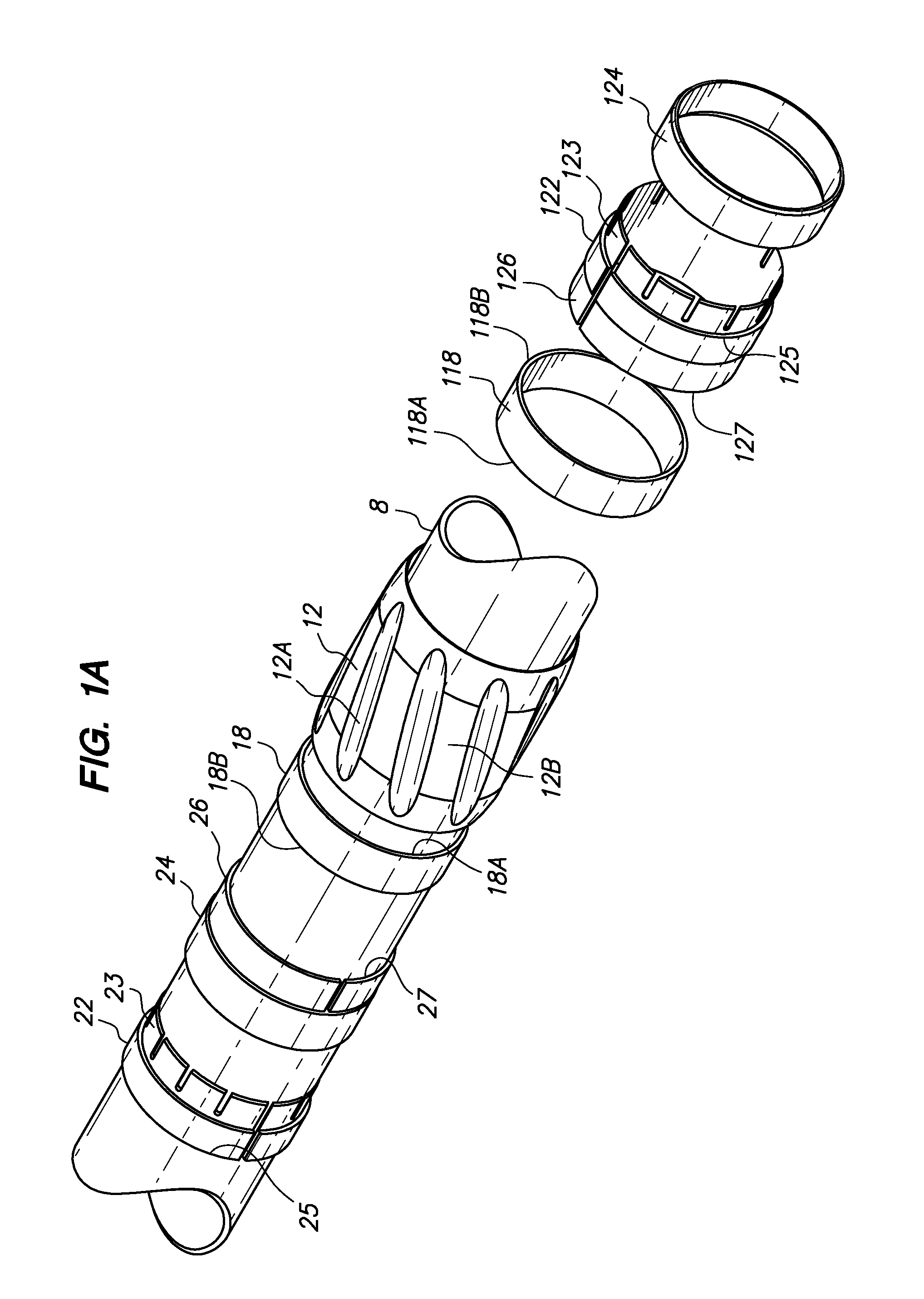Friction reducing wear band and method of coupling a wear band to a tubular
a friction-reducing wear band and tubular technology, applied in the field of earthen borehole drilling and casing, can solve the problems of increasing frictional contact, exacerbate wear, damage or erosion of the outer surface of the tubular, etc., to reduce the torque demand for rotation, reduce frictional resistance, and reduce the effect of frictional resistan
- Summary
- Abstract
- Description
- Claims
- Application Information
AI Technical Summary
Benefits of technology
Problems solved by technology
Method used
Image
Examples
Embodiment Construction
[0043]FIG. 1 is an exploded perspective view of an embodiment of a wear band and a tubular on which the wear band may be assembled. The components of the wear band of FIG. 1 are arranged aligned with or received on a tubular 8 in a sequence that facilitates assembly of the components into the wear band discussed below.
[0044]The embodiment of the wear band of FIG. 1 includes a rotating element 12 (e.g., sleeve) having a plurality of optional fluid channels 12A in the radially outwardly disposed wear surface 12B, a first sleeve bearing 18 and a second sleeve bearing 118, a first stop collar 22, having a plurality of fingers 23 extending in a first direction, and a second stop collar 122, having a plurality of fingers 123 extending in a second direction opposite the first direction. The depicted first stop collar 23 further includes a first sleeve 24, a stop wall 25 and a bearing spacer 26 extending in the second direction and terminating at a bearing face 27, and the depicted second s...
PUM
 Login to View More
Login to View More Abstract
Description
Claims
Application Information
 Login to View More
Login to View More - R&D
- Intellectual Property
- Life Sciences
- Materials
- Tech Scout
- Unparalleled Data Quality
- Higher Quality Content
- 60% Fewer Hallucinations
Browse by: Latest US Patents, China's latest patents, Technical Efficacy Thesaurus, Application Domain, Technology Topic, Popular Technical Reports.
© 2025 PatSnap. All rights reserved.Legal|Privacy policy|Modern Slavery Act Transparency Statement|Sitemap|About US| Contact US: help@patsnap.com



